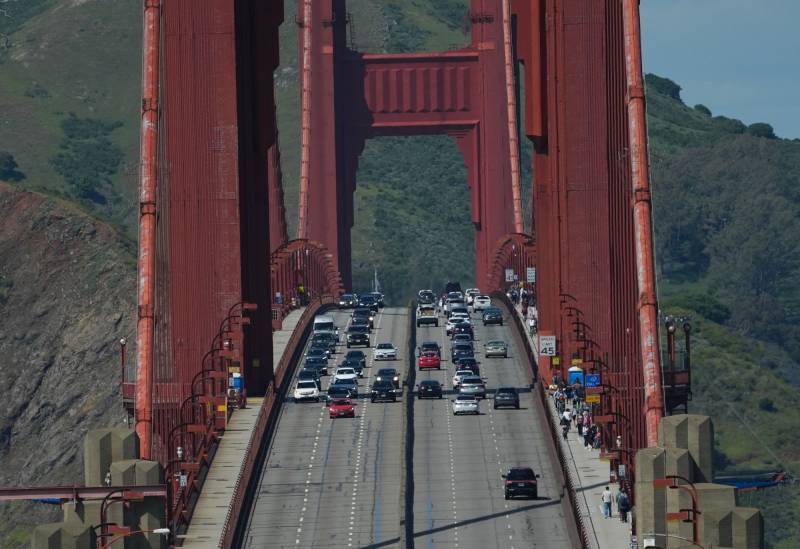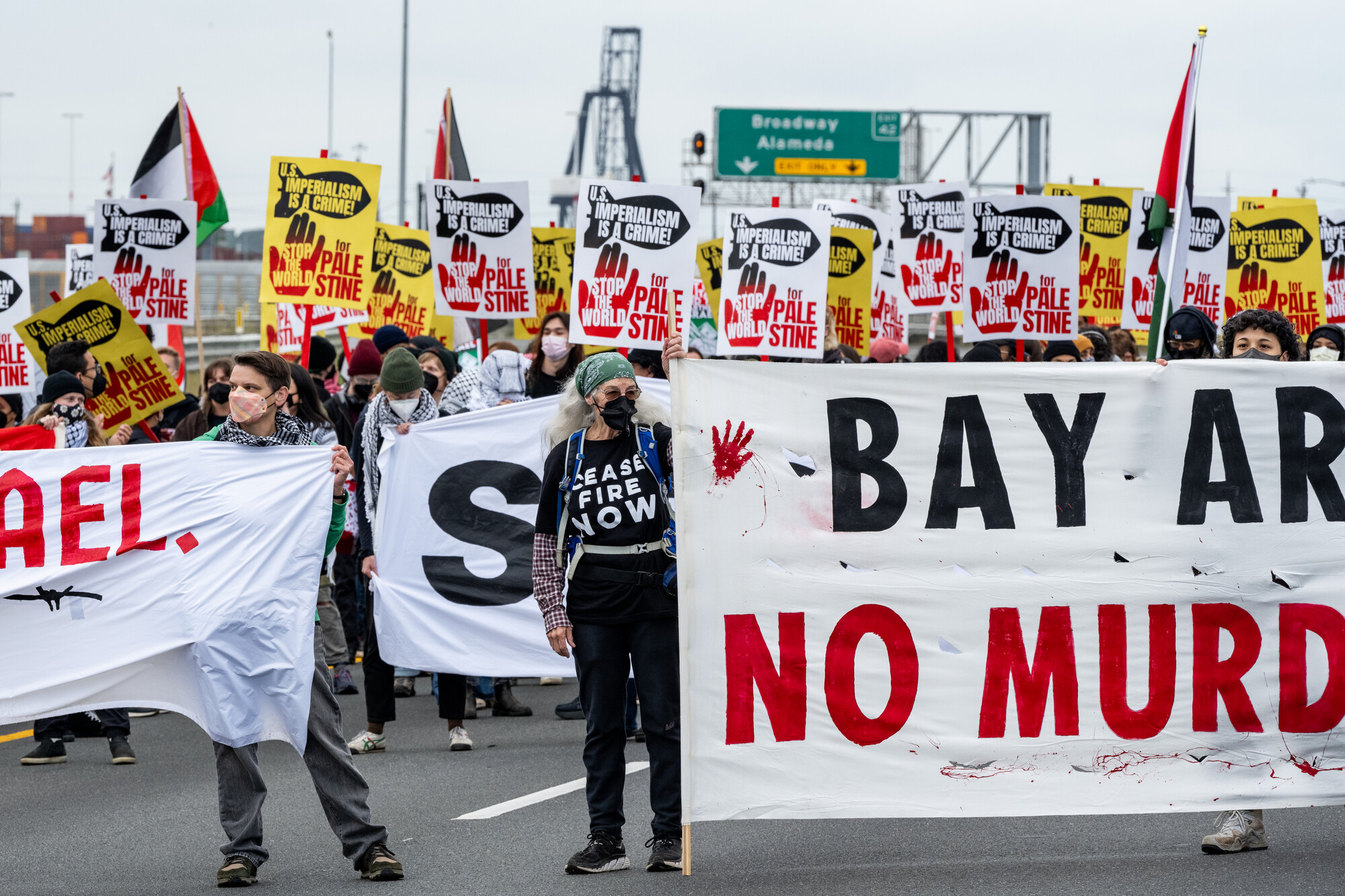A Superior Court judge will decide whether San Francisco District Attorney Brooke Jenkins has enough evidence to try felony cases against eight antiwar protesters who allegedly shut down the Golden Gate Bridge on Tax Day.
In a preliminary hearing on Tuesday at the Hall of Justice, Assistant District Attorney Angela Roze presented evidence and witness testimony the prosecution plans to use to paint a picture of trespassing, felony conspiracy and false imprisonment of early morning commuters.
The eight activists face the most significant charges of the 26 people arrested for allegedly shutting down the bridge as part of a worldwide economic blockade. Around 7:30 a.m. on April 15, protesters shut down traffic across the Golden Gate Bridge, chaining themselves to stopped vehicles. Organizers said they were demanding that the U.S. stop funding Israel in the war in Gaza, which it launched after Hamas’ attack on Israel on Oct. 7, 2023.
Judge Brendan P. Conroy is expected to decide later this week whether the felony cases can proceed.
Criminal defense attorneys and legal experts have questioned prosecuting the protesters, especially the controversial false imprisonment charges, which defined delayed motorists as victims. In past mass prosecutions, protesters have typically faced misdemeanor charges for blocking a roadway and for disobeying the orders of law enforcement.
“We think that there are lots of issues with their evidence from a legal standpoint and that a vast majority of the charges will be dismissed,” Jeff Wozniak, an attorney representing the defendants, told KQED after Tuesday’s hearing.



